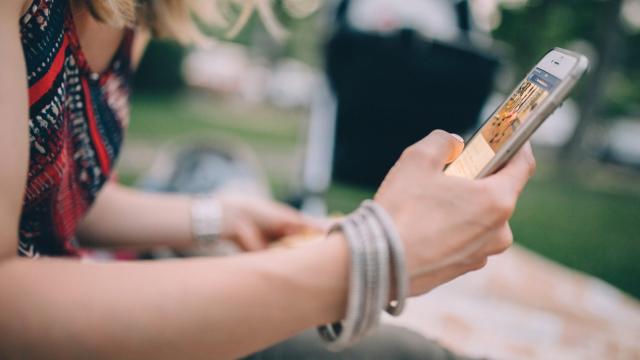There’s something magical when it comes to porn. At least when it comes to porn popping up in the most unintended of places, like the web browser of your brand-new smartphone. Luckily you have me to help you figure out how they got there. Because I know you never tapped, clicked, or typed in anything that you wouldn’t say in front of a nun.
Here’s Lifehacker reader Kathy’s dilemma:
Recently I bought my daughter (who is a minor) a used iphone 7 on swappa. This was the third phone I have bought there. The phone had been wiped and I went through the whole process of initializing it and setting it up as a new (to us) device with our sim etc.
When the thing was up & running. I opened Safari for some reason. (OK it was a few months ago, so I don’t quite remember the sequence; don’t think it auto opened.) The VERY FIRST thing it did without any action on my part was to connect to a porn site. I immediately deleted it.
I don’t recall if it was on the cell network or the home wife… but there are only two of us in this house (myself and this child) & no porn is watched here. How do you think this happened?
Ah, ghost porn. Scary stuff. But in all seriousness, this is a bit of a strange one — and I’m going to trust that you didn’t tap on anything you didn’t mean to. (I don’t say that to be glib; I’m just trying to establish the ground rules.)
My initial reaction was that some adult site must have been open on the browser of another device that’s linked to the same Apple ID as your new iPhone. But even when you pull up Safari on iOS, you’d have to do a bit of digging to access open tabs from other systems.
The same is true for a third-party browser like Google Chrome. Your open tabs on other systems don’t just magically appear when you first load the browser. So that’s probably out.
I doubt your iPhone has been infected with any kind of malware, as that’s not really something most iPhone owners have to deal with — nor would that be an issue for a just-wiped iPhone 7.
My only other thought, aside from the obvious explanation that perhaps some website you visited is to blame, is that your router’s DNS settings might have gotten changed somehow and that’s contributing to unwanted pop-ups (or redirects to adult sites you didn’t intend to go to).
It’s a bit of a long shot, I admit, but it’s worth exploring — if for nothing else than switching over to a faster DNS provider than your ISP.
Start by pulling up your router’s configuration page. If you have no idea how to do that, you can always consult your router’s manual. That, or just follow this quick advice (for a non-mesh router, which you likely just use a smartphone app to access):
-
On a Windows system, pull up the command prompt and type in ipconfig. The IP address that’s listed as your default gateway is likely your router’s IP address.
-
If you’re on a Mac, pull up System Preferences > Network and click on Advanced in the bottom-right corner. Click on the TCP/IP option toward the top of the next window and look for your router’s IP address.
-
If you’re on your iPhone-with-the-ghost-porn, tap on Settings, then Wi-Fi and tap on the “i” icon next to the Wi-Fi network you’re connected to. Your router’s IP address should be listed right there.
Once you have your router’s IP address, open a new tab in your browser, enter that IP address in the address bar and hit enter. Log into your router — if you don’t know how, its default user name and password are likely printed in its manual or on the router itself, likely on its rear or underside.
Once you’re in your router’s settings, you have a few things to take care of. First, update your router’s firmware. There might be an option for this directly in one of the menus of your router’s configurations screen; it might be buried somewhere in its settings.
You’ll probably also have to head over to the website for your router’s manufacturer, find the right support page and download the latest firmware so you can install it. It can be an annoying process, but not taxing.
Once you’ve done that, go and change the login credentials you use to access your router — especially if they’re still the “admin/admin” or “admin/password” default. No, no, no. Pick a user name and password that’s unique.
Next, look through your router’s settings for where you might be able to edit its DNS configuration. This is probably set to some kind of “obtain automatically” setting, but if it’s a random-looking IP address, that’s (probably) not good.
Either way, you should switch its primary and secondary DNS to a better option, like Google DNS, Cloudflare, or OpenDNS — the instructions (and IP address you’ll want to use instead) are all hyperlinked.
Finally, look through your router’s settings for any kind of “remote management” or “remote administration” option. If you find one, flick it off — in both senses of the phrase. You can never be too sure.
This should hopefully solve your mystery-porn issues. If not and you’re still getting random pop-ups of private parts, let me know and we’ll troubleshoot a bit more!

Comments
One response to “Why Did Porn Mysteriously Appear On A ‘New’ iPhone? ”
Bahahhaha. You think your household is a porn free zone.